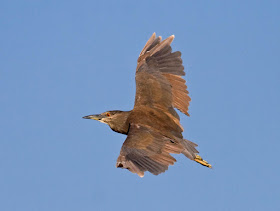eBird has added a new feature to their eBird mobile app. At this time it is only in Android, but they are working on an iOS version. I am really excited about the potential for this feature, called Tracks.
What is it?
eBird Tracks is a feature of the mobile app that creates a map with a track of your birding movements for each traveling checklist you make.
 |
| Screenshot: eBird Tracks of a recent birding hike I took on the Weir Trail at Palomar Mountain State Park. |
What are the benefits now?
As stated, it came first on Android devices. So right now Tracks is only available on that platform. And right now the map track is only visible on the phone that created the checklist when you review that checklist. Not too exciting. The only benefit you get now is seeing on a map where you birded
and having a very accurate measurement of how far your traveled.
What are the future uses for eBird Tracks?
This is really exciting for me to think about. Those tracks that only I can see now on my phone? They are captured in eBird and will be available for others in the future. Have you ever looked at the map for a rare sighting and found the Hotspot was a large area and you didn't know where in it the bird was? Well, with Tracks you'll at least have a map with the birding track on it. So you will know where to begin and what route to take.
When you visit the Hotspots section of eBird, you should be able to view the routes of recent birders to that location. This will give you a good idea of the route other birders regularly take, and maybe help you discover a new trail.
I also think that the eBird team should consider adding a feature to tag a specific bird's location. This function was available in the predecessor,
BirdLog, and I've missed it for tagging exact locations in the comments section for certain birds.
The official announcement of
eBird Tracks is here.
















































